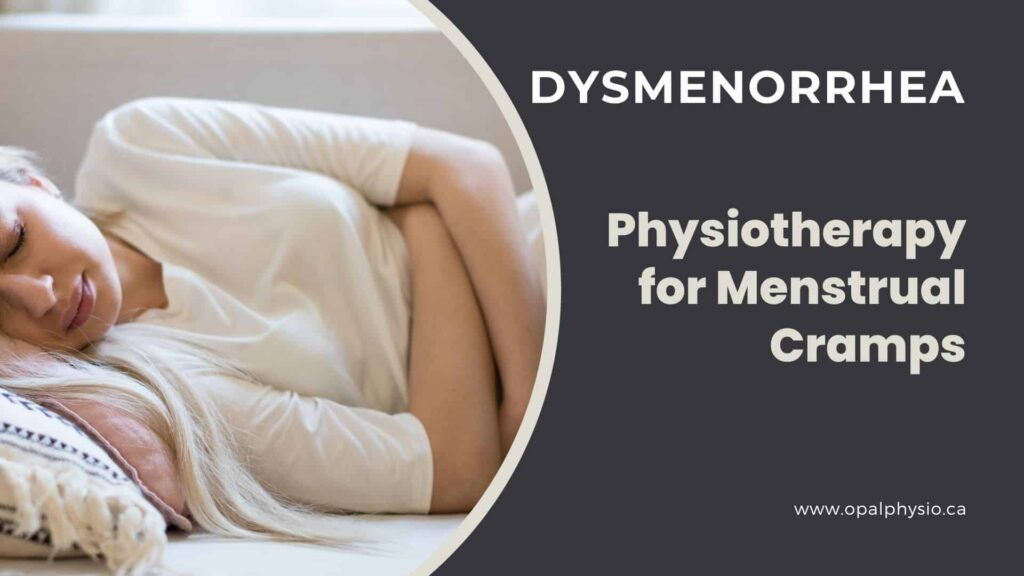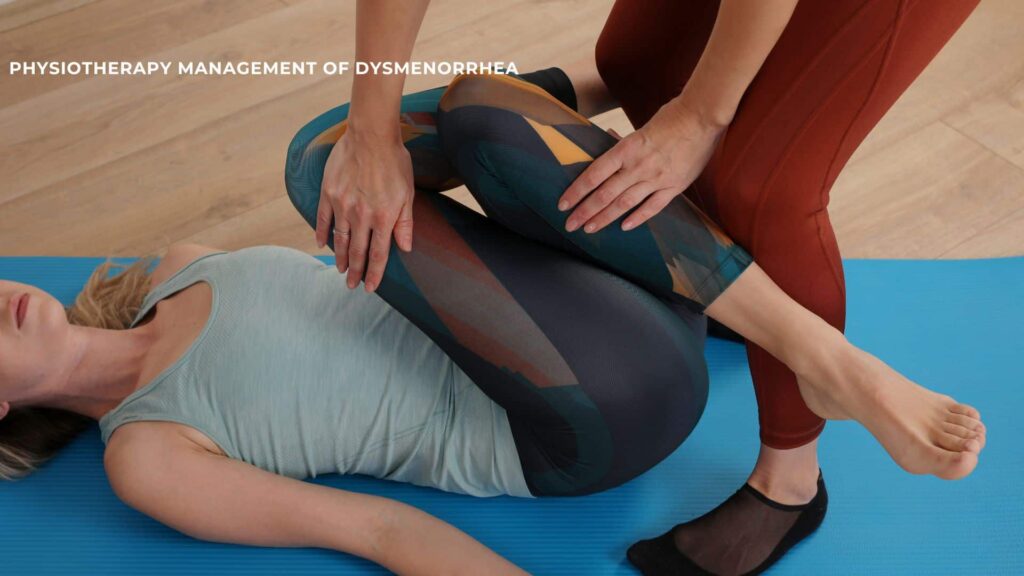Dysmenorrhea – Physical therapy for Menstrual Cramps
Tired of being held hostage by excruciating pain and discomfort during your periods?
It’s time to take charge of your well-being! Our incredible team of skilled physiotherapists is here to empower you with cutting-edge Dysmenorrhea Physiotherapy Treatment right in Langley.
Wave goodbye to those pesky menstrual cramps and say hello to a life filled with freedom and comfort. Unleash your inner strength and reclaim control over your body with our personalized pelvic floor physiotherapy services for dysmenorrhea. Don’t let dysmenorrhea hold you back any longer – let’s conquer it together!

Dysmenorrhea or menstrual cramps physiotherapy treatment
Dysmenorrhea is a menstrual cramping pain that occurs during or before menstruation. This can be a debilitating condition that many women experience. The severity of this pain may vary from woman to woman and ranges from mild to extremely severe.
Pelvic floor physiotherapy can help decrease the pain symptoms associated with dysmenorrhea by relieving pelvic and abdomen tension. At Opal Physio, we provide treatments to help manage the pain and discomfort caused by dysmenorrhea by targeting the muscles and joints causing the symptoms. Our therapist would use various techniques to help decrease the severity of pain, including manual therapy and exercise instructions.
What is dysmenorrhea?
Dysmenorrhea, or painful menstrual cramps, occurs before or during the menstrual cycle. Menstrual cramps occur when the muscles in the uterus contract and push on the lining. The World Health Organization estimated that it is the most common cause of pelvic pain. Pain is usually experienced by women between the ages of 12 and 50.
Dysmenorrhea is the most common gynecological condition with a leading cause of morbidity and restricted activities in women. The exact cause of menstrual cramps is unknown, and usually, several factors can cause the pain.
Causes of dysmenorrhea
Dysmenorrhea is a significant sign secondary to various gynecological conditions. It affects the quality of life of reproductive-aged women. This medical condition is of uterine origin and caused by uterine contractions.
Several factors, including hormonal changes, uterine contractions, and uterine cramps, can cause menstrual cramps. Some of which include:
- Hormonal imbalances: Fluctuations in hormones, specifically prostaglandins, can cause uterine contractions creating an inflammatory response in the uterus and leading to menstrual cramps. The prostaglandin can reduce blood flow to the uterus and ovaries, leading to a painful period.
- Endometriosis: A condition where the tissue lining the uterus grows outside of it, leading to painful periods.
- Fibroids: Noncancerous growths in the uterus that can cause pain during periods.
- Pelvic Inflammatory Disease (PID): An infection of the reproductive organs that can cause menstrual pain.
- Adenomyosis: A condition where the tissue lining the uterus grows into the muscular wall of the uterus, leading to painful periods.
- Cervical Stenosis: A condition where the opening of the cervix is too small, causing menstrual blood to build up and leading to pain.
- Intrauterine Device (IUD): A contraceptive device that can cause cramps and painful periods.
Dysmenorrhea risk factors
The risk factors include
- Age – younger than 30 years old
- Having earlier menarche (younger than 12 years)
- Having longer menstrual cycles and heavier menstrual flow
- Somatic symptom disorder
- Family history
- Anxiety
- Stress
- Depression
- Smoking
- Overweight
The symptoms of pain usually reduce after childbearing and increase in age

Physiotherapy management of dysmenorrhea
The primary aim of treatment is pain relief achieved with
- Therapeutic Exercises: Regular exercise can help reduce menstrual pain and cramps. Physical training, such as stretching, aerobic exercise, yoga, and pelvic floor /kegel exercises, can effectively treat primary dysmenorrhea. Stretching exercises help reduce the pain in the lumbar, abdominal and thigh areas. Pelvic floor exercises augment blood supply to your uterus, allowing the reduction/abolition of prostaglandins, thus reducing menstrual pain. Aerobic exercise keeps you energized and functionally active. Our physio can recommend specific exercises that can help strengthen the pelvic floor muscles and reduce pain.
- Thermotherapy: heat therapy reduces pain through the elimination of muscle tension and the relaxation of abdominal muscles. Our physiotherapists can recommend the best way to apply heat therapy, such as using a heating pad or warm bath.
- Manual therapy: Involves using hands-on techniques to help reduce muscle tension and pain, including myofascial, trigger point therapy, joint mobilization, and massage. Manual therapy relieves symptoms by improving joint flexibility and relaxing tensed muscles to help manage menstrual cramps.
- Relaxation techniques: Stress can make menstrual pain worse. Our physio can teach relaxation techniques such as deep breathing, meditation, and mindfulness to help reduce stress and manage pain.
This menstrual disorder can affect your physical and psychological health. It is necessary to seek help if you are suffering from menstrual pain. Pelvic physiotherapy treatment is beneficial for dysmenorrhea. Several studies have proved that physiotherapy can treat dysmenorrhea symptoms effectively.
Talk to our pelvic health physiotherapist about your menstrual pain today.
